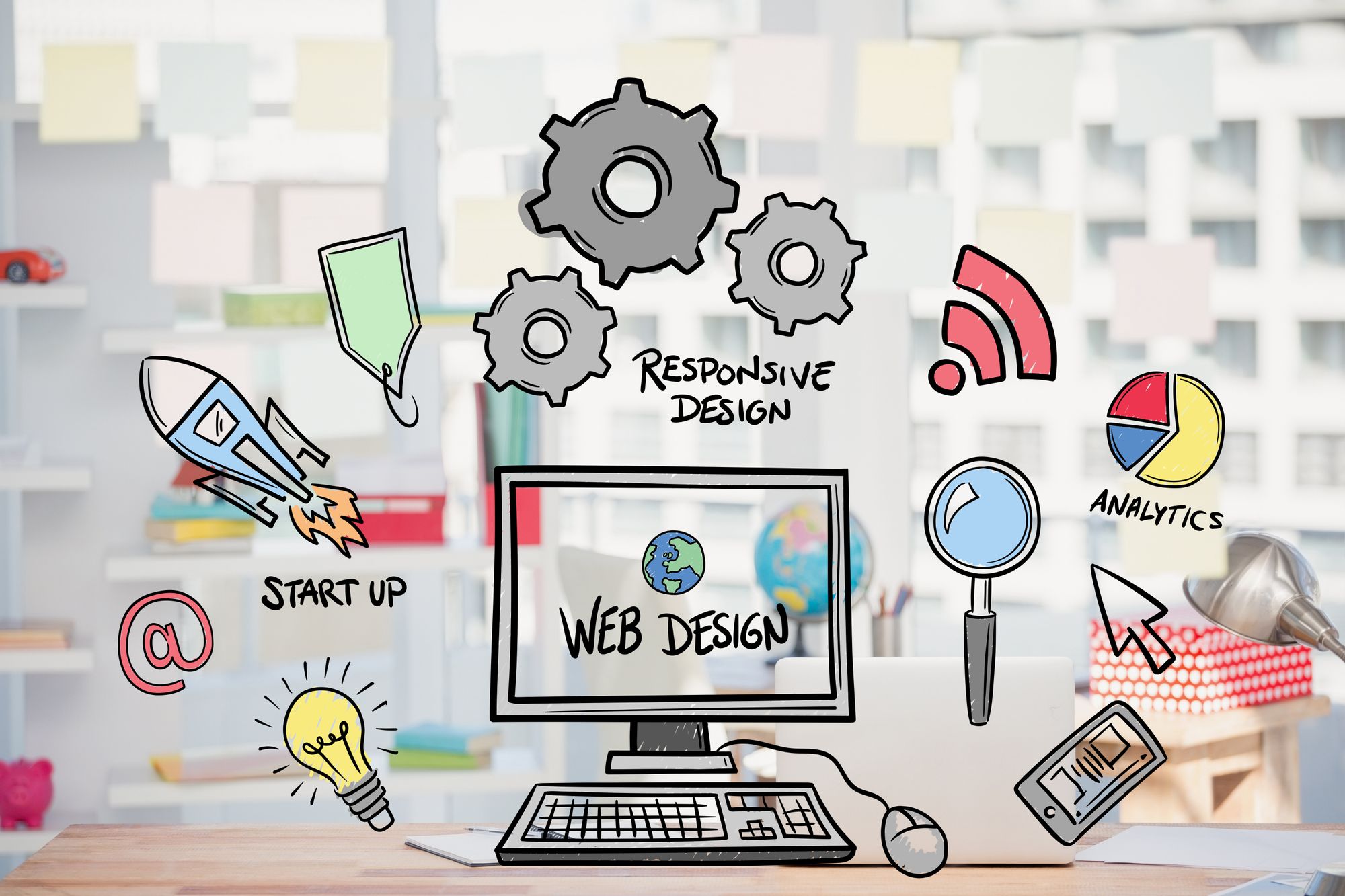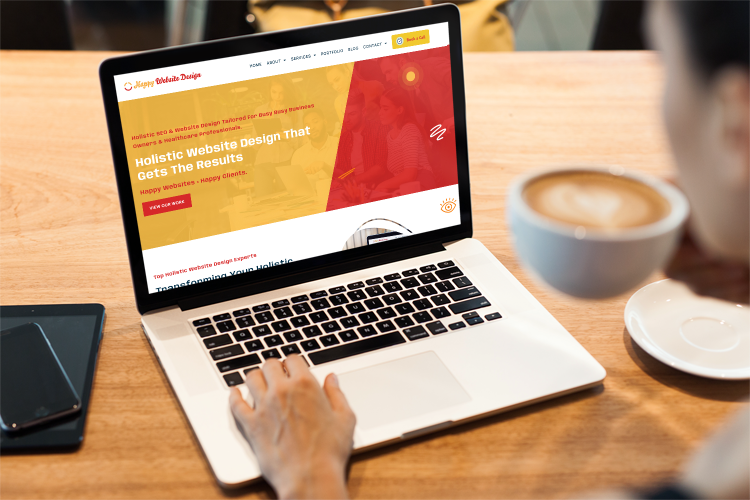Boost audience interaction through innovative happy web design.
Boost audience interaction through innovative happy web design.
Blog Article
Why Holistic Web Design Is the Key to a Seamless Customer Experience
In today's electronic landscape, the significance of alternative internet layout can not be overstated, as it elaborately weaves together appearances, usability, and functionality to produce a smooth individual experience. By taking on a comprehensive approach that prioritizes individual requirements and leverages comments, developers can boost the total communication with their systems.
Understanding Holistic Web Design

Integrating customer responses and behavior data is vital in all natural web layout. This iterative process aids developers to recognize discomfort points and areas for renovation, ensuring that the final item resonates with individuals. In addition, alternative design stresses the significance of accessibility, making certain that all individuals, no matter their capabilities, can browse and communicate with the website successfully.
In addition, the integration of receptive layout principles is vital in accommodating different tools and screen sizes, better enhancing the individual experience. By recognizing the interconnectedness of these components, designers can develop websites that not only draw in yet also keep customers, ultimately driving engagement and conversions. Alternative web style is, consequently, a strategic method that promotes a purposeful partnership between users and digital rooms, leading the means for sustainable on the internet success.
Crucial Element of Holistic Design

One more vital element is uniformity in aesthetic and practical aspects throughout the web site. This involves maintaining a natural color scheme, typography, and format, which assists users browse the site intuitively - happy web design. In addition, responsive style is important, ensuring that the internet site does optimally throughout different tools and screen sizes
Availability is likewise an essential element of holistic layout. By adhering to access requirements, developers can produce comprehensive experiences that cater to varied user teams, including those with handicaps. The integration of material approach guarantees that useful information is provided plainly and succinctly, enhancing comprehension and involvement.
Lastly, efficient cooperation among style, growth, and marketing teams cultivates a unified vision that aligns with company goals. By concentrating on these key aspects, all natural website design can provide an improving customer experience that is both engaging and practical.
Advantages of a Smooth Experience
Developing a seamless customer experience uses many advantages that substantially enhance general satisfaction and engagement. At its core, a seamless experience promotes a sense of simplicity and intuition, permitting individuals to browse an internet site or application effortlessly. This reduction in friction not only raises the likelihood of individuals returning yet additionally boosts their readiness to recommend the platform to others.
Moreover, a smooth experience leads to improved conversion rates. When users find what they need with minimal effort, they are more inclined to finish wanted activities, such as buying or enrolling in an e-newsletter. This performance converts right into higher client retention, as satisfied users are most likely to come to be dedicated supporters for the brand name.
Furthermore, a cohesive and seamless user interface decreases cognitive tons, enabling users to focus on web content instead than battling with navigation or design inconsistencies. This quality not just improves user satisfaction yet likewise strengthens brand credibility. Inevitably, focusing on a seamless customer experience leads to a competitive benefit, as companies that invest in this element are better placed to satisfy the evolving assumptions of their audience and drive long-term success.
Carrying Out Alternative Strategies
To attain a really smooth individual experience, organizations have to embrace holistic methods that think about every facet of style and functionality. This technique begins with a linked vision that aligns employee throughout various techniques, including UX/UI layout, content holistic web design growth, and technical execution. Effective cooperation fosters a shared understanding of individual requirements and purposes, enabling even more coherent design choices.
Next, it is important to develop customer identities and journey maps that mirror the diverse demographics and habits of the target audience. By understanding with users' point of views, companies can anticipate difficulties and simplify interactions throughout the digital experience.

In addition, consistent branding and messaging ought to penetrate every touchpoint, ensuring a recognizable and credible visibility that boosts user interaction. Incorporating responsive design principles is likewise essential, as customers now communicate with material throughout numerous tools.
Furthermore, organizations ought to prioritize availability, making sure that all customers, no matter of capacity, can browse and gain from their digital offerings. By embedding these holistic strategies into the design process, organizations can create a cohesive and pleasurable user experience that promotes complete satisfaction and loyalty.
Determining Individual Experience Success
While achieving a holistic method to web design is important, measuring user experience success is equally important to ensure that layout approaches properly fulfill individual requirements. This requires a combination of qualitative and measurable metrics to obtain a thorough understanding of individual interactions and complete satisfaction levels.
Trick efficiency signs (KPIs) such as user engagement, conversion prices, and bounce rates offer valuable measurable understandings. A high conversion price might indicate that customers discover the design instinctive and engaging. On the other hand, raised bounce rates can indicate that individuals are disgruntled or confused, demanding a reevaluation of the layout elements.
Qualitative measures, consisting of individual comments, studies, and usability screening, are essential for gaining much deeper insights into the customer experience. Examining user remarks can reveal discomfort points and locations for enhancement, while use tests permit designers to observe real-time communications and determine obstacles individuals face.
Eventually, the integration of these dimension techniques permits continual refinement of internet design, guaranteeing it remains user-centered and efficient in supplying a seamless experience (happy web design). Regularly reviewing these metrics will certainly allow developers to adapt to progressing customer needs and choices, strengthening the overall success of an alternative website design method
Verdict
In conclusion, holistic web design emerges as a fundamental approach to achieving a seamless user experience. By integrating visual appeals, functionality, and usability, this design philosophy addresses diverse user demands and choices.
Report this page